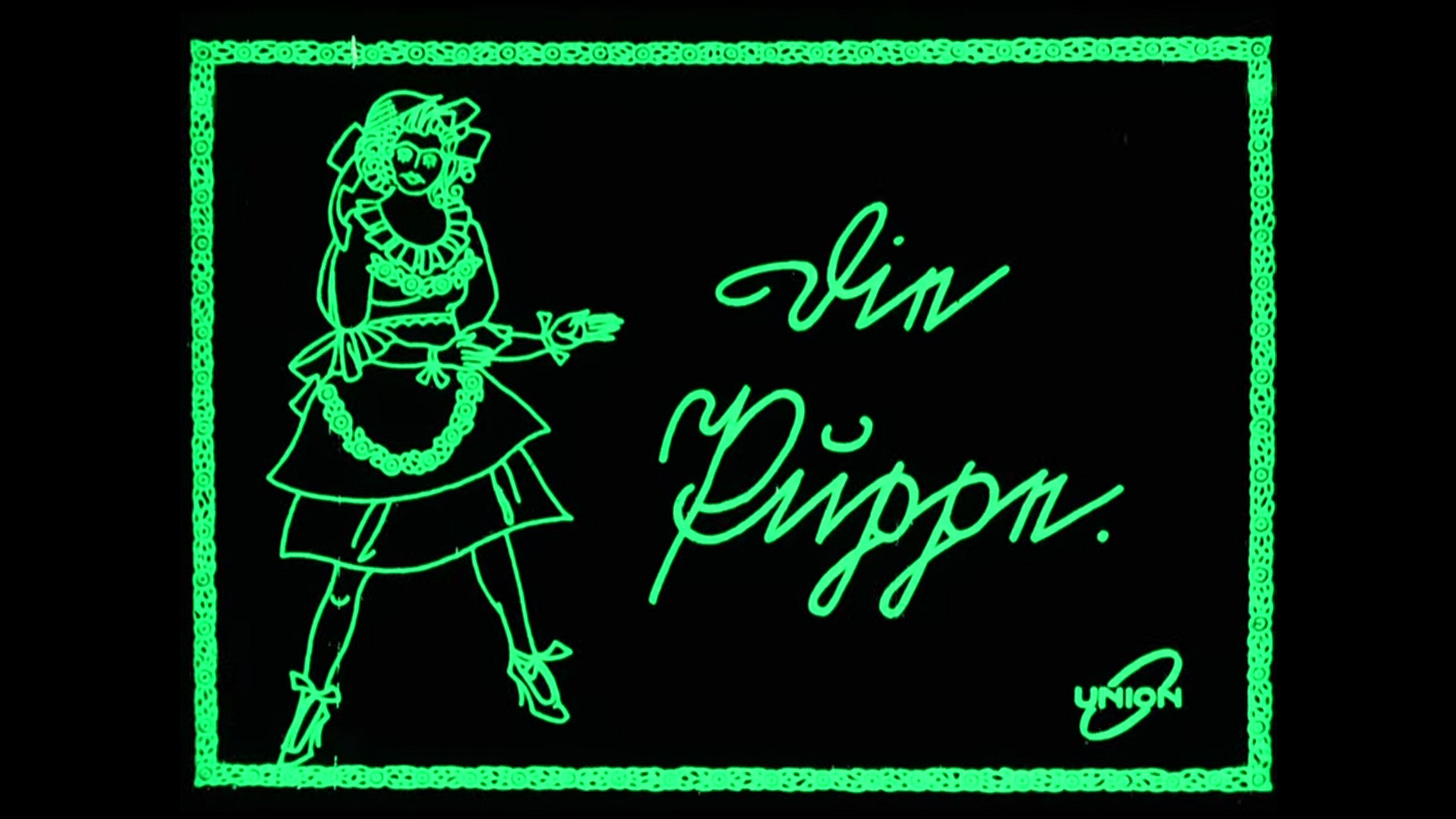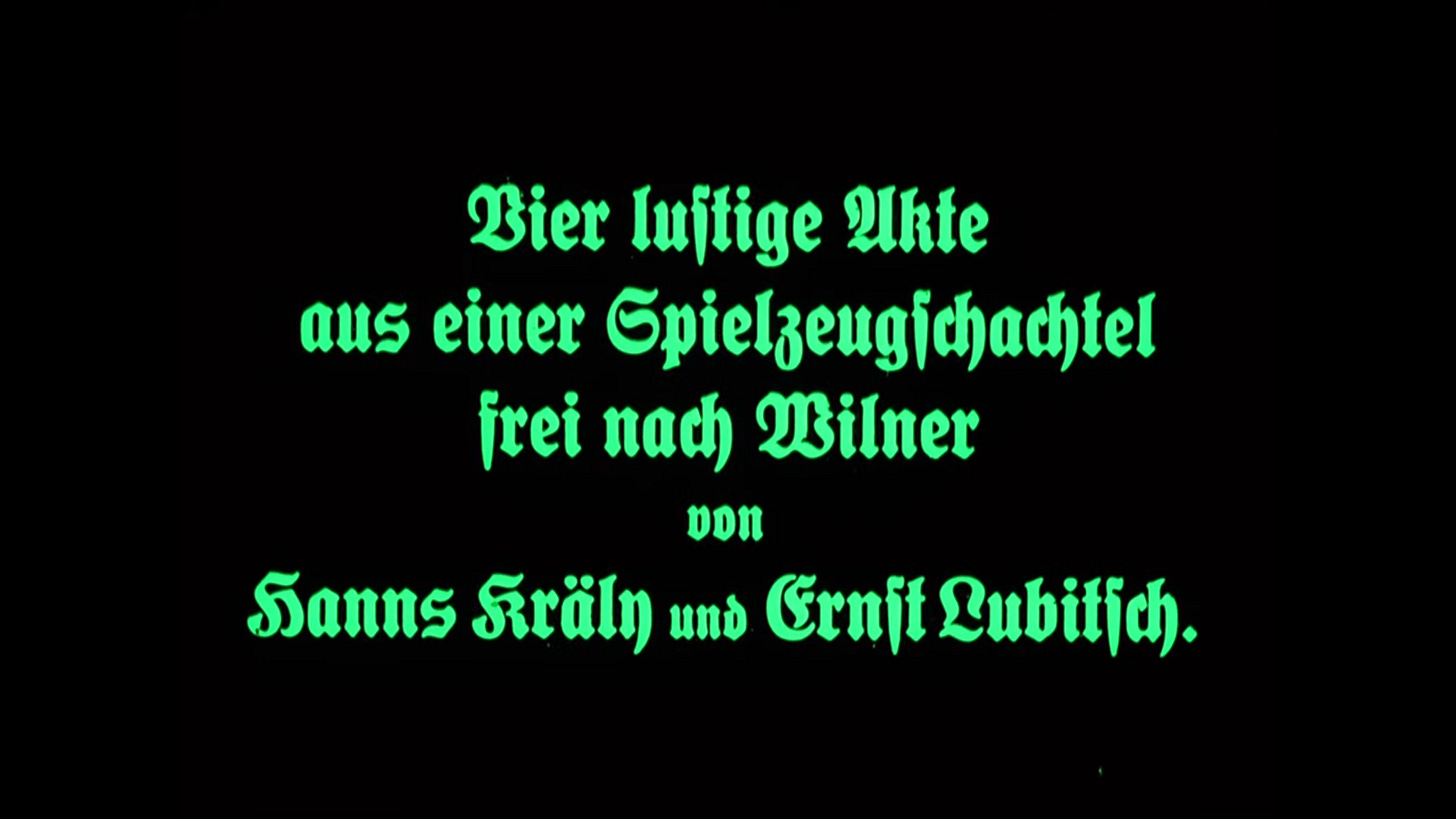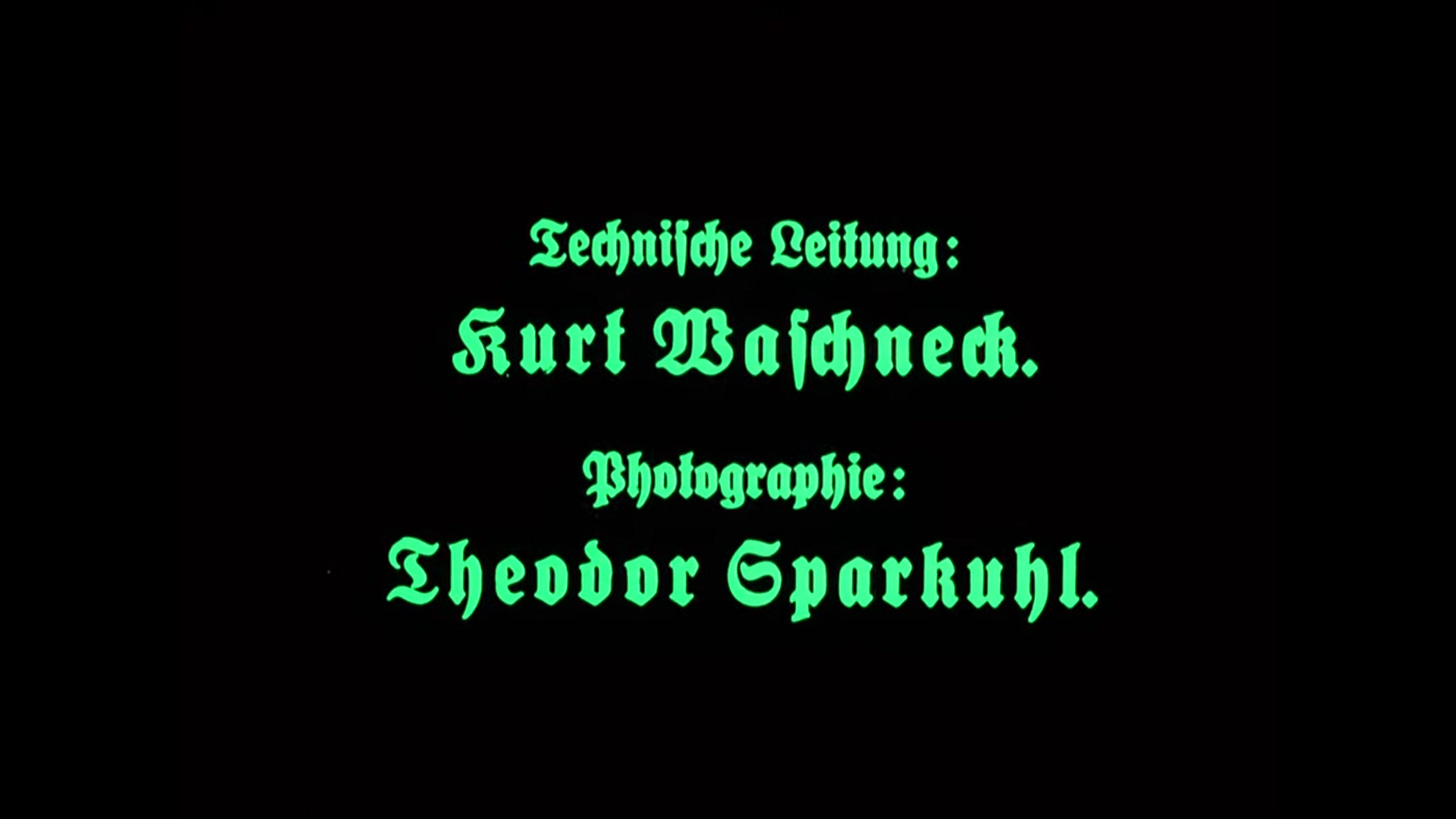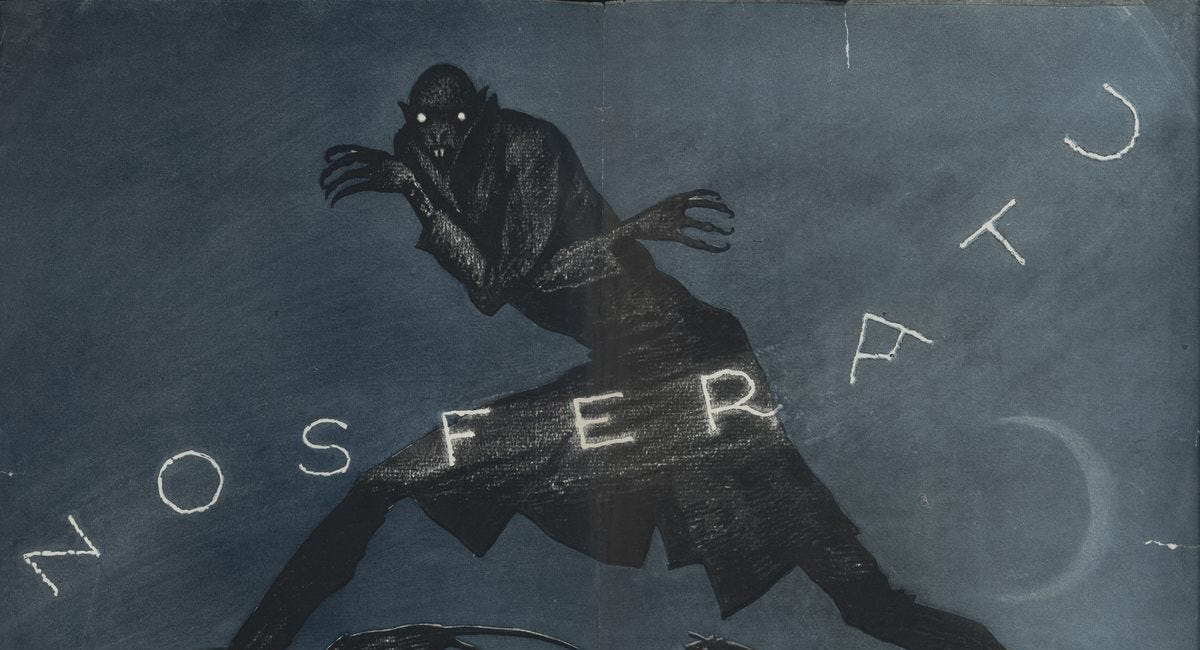Let's read another movie!
Die Puppe: opening credits
Quick links
General content note: Die Puppe includes suicide jokes, references to a master beating his apprentice, and an insulting portrayal of Catholic monks.
Introduction
I believe that watching silent films is a good way to increase one’s comfort with reading a language. However, when the language is German, this can be complicated by the challenge of deciphering the historical Fraktur typestyle and Kurrent script.
This past October, I made a series of posts intended to bridge that gap, in which I transcribed the intertitles and diegetic text from F. W. Murnau’s silent horror film Nosferatu. It was a valuable exercise for me, and I hope it proves a useful resource for others interested in this admittedly niche language-learning technique.1
This holiday season, I’m doing it again, with a lesser-known and more lighthearted film: Ernst Lubitsch’s fantasy romance Die Puppe from 1919.
In terms of legibility, the titles of Die Puppe are in some ways more challenging than Nosferatu’s, and in some ways more approachable. Nosferatu has its main intertitles in a highly legible, mostly-Roman style, but also includes in-universe documents in tight 19th-century Kurrent, often rather small within the frame, and rendered more difficult to decipher simply because of the physical aging of the film. Die Puppe, on the other hand, has its in-universe writing rendered large and clear, often in a modernized cursive.2 However, the non-diegetic intertitles are in traditional blackletter.
As with Nosferatu, this series will be divided into parts based on the act divisions of Die Puppe. This first part will cover the opening credits only, and is meant mainly to demonstrate the format and to serve as a link hub for the other parts. It will remain free.
The other four parts will correspond to the four acts of the film. They will include screenshots and transcriptions of all the intertitles and of every shot containing legible diegetic text, with occasional, scattered notes on interesting features of the language and lettering. They will be paywalled.
Paid subscribers are welcome and encouraged to copy or excerpt these posts (in any quantity and format) for educational purposes. If you’re an educator who can’t afford a paid subscription, DM me for a comp.
Opening credits
Die
Puppe.
Vier lustige Akte
aus einer Spielzeugschachtel
frei nach Wilner
von
Hanns Kräly und Ernst Lubitsch.
Regie:
Ernst Lubitsch.
Technische Leitung:
Kurt Waschneck.Photographie:
Theodor Sparkuhl.
Personen:
Baron von Chanterelle … Max Kronert
Lancelot, sein Neffe … Hermann Thimig
Hilarius, Puppenfabrikant … Victor Janson
Dessen Frau … Marga Köhler
Ossi, seine Tochter … Ossi Oswalda
Der Lehrling … Gerhardt Ritterband
Der Prior … Jacob Thiedtke
Lancelots Amme … Josefine Dora
You can read more about my approach in the intro post for that series:
And some of the cursive is Latin- rather than German-style.







